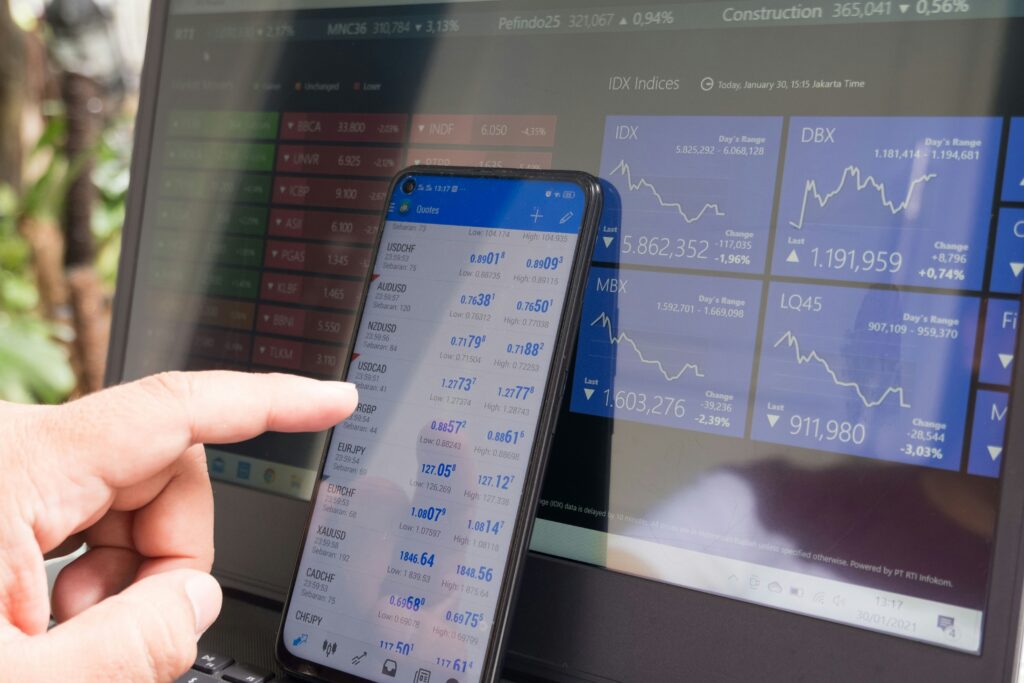Mastering the forex market requires advanced strategies. Discover the top 6 advanced forex trading strategies in 2024 to elevate your trading game and potentially boost your profits.
Whether you’re a seasoned trader looking to refine your approach or an aspiring investor eager to learn, this guide offers valuable insights.
Here is a list of the top 6 advanced forex trading strategies for traders in 2024:
In This Post
Position Trading
Position trading involves establishing and maintaining market positions over extended periods. To execute this strategy effectively, traders meticulously analyze market trends and anticipate future movements before entering a trade. Consistent market monitoring is essential to identify both minor and major price fluctuations.
When a pronounced uptrend emerges, position traders typically initiate long positions, anticipating continued price appreciation.
Conversely, during a pronounced downtrend, short positions are established with the expectation of further price declines. Traders maintain these positions until market conditions signal a potential trend reversal.
Non-Farm Payroll (NFP) Trading
The Non-Farm Payroll (NFP) report, a monthly economic indicator released by the United States, measures changes in employment excluding agricultural, non-profit, and household workers. This report significantly impacts the US dollar and, consequently, other currencies in the forex market.
Day traders frequently capitalize on the market volatility surrounding NFP releases. Often, the market begins fluctuating several hours before the report’s publication, and its direction can abruptly change upon its release.
If the market trends upward before the NFP but reverses downward afterward, traders can profit by establishing short positions. Conversely, if the market downtrend reverses to an uptrend post-NFP, long positions can be opened.
However, if the market maintains its pre-NFP direction, traders may choose to hold existing positions, assuming the NFP report did not trigger a trend reversal.
Arbitrage Trading
Arbitrage trading is a strategy that exploits price disparities between the same currency pair on different forex markets.
By simultaneously buying a currency at a lower price on one exchange and selling it at a higher price on another, traders can profit from these discrepancies.
Such opportunities often arise during periods of heightened market volatility, such as significant news releases or economic events.
To capitalize on these fleeting opportunities, traders must execute trades rapidly. It’s essential to recognize that arbitrage opportunities are typically short-lived and require swift action.
Counter-Trend Trading
Counter-trend trading is a forex strategy that involves taking a position opposite the prevailing market direction. This approach rests on the assumption that weak trends are more susceptible to reversals.
Here’s how it works:
Identifying Potential Reversals
Traders look for reversal signals, often represented by candlesticks that oppose the current trend. For example, a red candlestick during an uptrend or a green candlestick during a downtrend might indicate a potential reversal.
Entering the Trade
Upon encountering two or more such opposing candlesticks, traders might enter a counter-trend position. This could involve buying in a downtrend or selling in an uptrend, aiming to benefit from a potential reversal.
Entry and Exit Points
Entry can occur at the low point of a red candlestick in a downtrend, with an exit targeted at the high of a subsequent green candlestick.
Stop-Loss Placement
Stop-loss orders are crucial to mitigate risk. These are placed above the high or below the low of the price range formed between the counter-trend move and the trend impulse line (the line indicating the dominant trend).
However, it is important to note that:
- Counter-trend trading can be challenging, as correctly identifying short-term reversals within a larger trend is difficult.
- This strategy is generally recommended for experienced traders comfortable with managing the increased risk associated with going against the market trend.
Swap Trading
Swap trading capitalizes on the interest rate differential between two currencies in a forex pair when a position is held overnight. Understanding swap rates helps you make informed decisions about entry and exit points, particularly for long-term positions.
Here’s a breakdown of the strategy:
Overnight Positions
This strategy revolves around keeping long (buying) or short (selling) positions open beyond the standard trading day.
Swap Rates
The interest earned or paid for holding these overnight positions is called a swap. The swap rate depends on the interest rates of both currencies in the pair.
Favourable Swaps
In an uptrend, traders might hold a long position overnight to earn interest on the higher-yielding currency. Conversely, during a downtrend, holding a short position overnight can avoid paying interest on the lower-yielding currency, or even generate a small profit if the interest rate differential is positive.
Calculating Swap Costs
Let’s say you’re trading EUR/USD with an interest rate of +0.50% for EUR and -0.49% for USD (these are hypothetical values).
If you short 1000 units of EUR/USD and hold it overnight, you’ll calculate the swap as: +0.50% (interest earned) – 0.49% (interest paid) = 0.01% per unit.
This translates to $0.01 per unit (0.01% x $1) or a total of $10 for the entire 1000-unit position.
Multiple Days
Holding positions for more than one night multiplies your potential interest earnings, as long as the market continues to trend in your favor.
Hedging Forex
Hedging is a risk management technique employed in forex trading to offset potential losses. By establishing opposing positions in correlated currency pairs, traders aim to mitigate the negative impact of adverse price movements.
A common hedging approach involves selecting positively correlated pairs, such as GBP/USD and EUR/USD. If a trader holds a long position in GBP/USD, they might hedge by taking a short position in EUR/USD.
It is crucial to understand that while hedging can reduce potential losses, it typically doesn’t generate significant profits. The primary goal is to protect existing positions from adverse market conditions.
Conclusion
Combining multiple indicators can enhance trading signal accuracy, leading to more confident trade execution.
However, effectively employing these advanced forex trading strategies demands a solid foundation of market knowledge and experience.
Take advantage of our wide range of highly educational courses here at Beo Forex Academy and master the best forex trading strategies.




